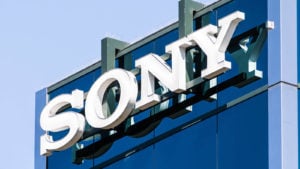Reflecting a yearly increase of around 42%, the VR market size is expected to reach about $22.81 billion in 2024 and soar to $131.93 billion by 2029. Another source forecasts the market will reach $244.84 billion by 2032 with a CAGR of 28.6% from 2024 to 2032.
Thanks to tech giants’ large expenditures and strong technological adoption, North America dominates virtual reality stock markets. Furthermore important as well are government policies, 5G network improvements, China’s immersive technology drive and Asia-Pacific.
Given the business opportunities, several big companies are starting VR projects. Following the announcement of visionOS 2 with spatial computing capabilities at WWDC 2024, Apple (NASDAQ:AAPL) improved its Vision Pro VR headgear. Though specifics and a release date are still uncertain, Samsung (OTCMKTS:SSNLF) and Alphabet’s (NASDAQ:GOOG, NASDAQ:GOOGL) Google could also bring their much-needed XR/VR headgear later this year.
Let’s look at three established buy-rated virtual reality stocks with double-digit potential among all the industry buzz.
Microsoft (MSFT)

Microsoft (NASDAQ:MSFT) may release a new HoloLens 3 with fresh patents revealing modular VR helmet designs. This design lets several pieces attach to the core helmet, boosting versatility and perhaps cutting production costs. This patent suggests a more flexible and eco-friendly VR device.
Set to debut in November, Microsoft Flight Simulator 2024 has attracted a lot of VR community attention. The 2024 version seeks to enhance threading for optimal performance, benefiting VR users.
Microsoft will continue to support Windows Mixed Reality devices, although updates and advancements are reducing, implying a preference for business VR solutions like HoloLens over consumer mixed reality devices.
Microsoft’s fourth-quarter fiscal year 2024 EPS was $2.95, above projections of $2.93. Annual sales grew 15% to $64.73 billion. However, difficulties with the cloud division dampened sentiment despite high revenues. Microsoft’s Intelligent Cloud earned $28.52 billion, below analyst estimates of $28.68 billion. Azure and other cloud services revenue rose 29%, below 31% estimates. But Azure’s first-quarter revenue is forecasted to rise by 28% to 29%.
Overall, the report is a healthy one and delivers a respectable earnings beat; MSFT stock is trading at an attractive entry point, offering potential upside of 22%.
Meta Platforms (META)

Meta Platforms (NASDAQ:META) is lowering Quest 2 prices in order to boost VR sales, one of the many measures it’s taking to boost its profile among virtual reality stocks. The 128GB Quest 2 runs $249.99 and the 256GB $299.99, making VR more accessible and supports business usage.
Beginning in August, Meta Quest VR headsets, available in the United States and Canada, will start getting upgrades with Meta’s AI helper. Users of this assistance will have improved capabilities and a more realistic virtual reality.
It’s also helping Ray-Ban incorporate AI and AR into their smart eyewear. The social media giant is also working on Project Nazare, a more powerful AR smart glass that will redefine consumer electronics.
Meta keeps enhancing its VR devices by adding functionality to Meta Quest headsets. Meta added its AI assistance to Quest headsets in the U.S. and Canada in August. A bigger deployment is scheduled for September. The UploadVR Summer Showcase 2024 included many new VR games, such as “Underworld Overseer,” “Smash Drums,” and “Ember Souls,” which will be released later this year.
Meta has also introduced the “Segment Anything Model 2,” which locates items in photographs and movies. Meta introduced “AI Studio,” which lets non-programmers develop, share and discover AI.
The VR initiatives add to an already impressive portfolio of products, which helped Meta beat earnings and revenue estimates once again in Q2 2024. Meta stock popped on the earnings beat and raised outlook, but there is still a 10% upside to shares.
Sony Group (SONY)

Sony Group (NYSE:SONY) released an adaptor to let the PlayStation VR2 run on PCs, offering a big upgrade. From Aug. 7, this feature will enable PSVR2 users to play VR games on Steam, expanding its market reach and utility. Sony improved its tool’s versatility to compete with stand-alone headsets like Meta Quest 3 and Apple Vision Pro.
Under its “Beyond The Screen” promotion, Sony Pictures introduced Torchlight, a powerful visualizing tool. This facility uses Sony’s exclusive technology to allow directors to observe and create in real-time using Epic Games’ Unreal Engine. Additionally, Sony Semiconductor Solutions introduced a 4K OLED microdisplay for VR and AR headsets.
On a separate note, Sony Group and Apollo Global Management (NYSE:APO) reportedly offered $26 billion to buy Paramount (NASDAQ:PARA). Apollo will have a minority stake in this deal, while Sony will control the majority. Sony may expand its media portfolio with Paramount’s Halo TV and Sonic movie libraries.
Such moves are not new to Sony, which purchased Audeze, a leading audio technology company, last year. PlayStation users’ audio experience is enhanced using Audeze’s advanced audio technology and PlayStation’s ecosystem.
With shares down 9% this year, it’s a gem among virtual reality stocks, with a potential upside of 27%.
On the date of publication, Faizan Farooque did not have (either directly or indirectly) any positions in the securities mentioned in this article. The opinions expressed in this article are those of the writer, subject to the InvestorPlace.com Publishing Guidelines.
On the date of publication, the responsible editor held a long position in GOOG.
Faizan Farooque is a contributing author for InvestorPlace.com and numerous other financial sites. Faizan has several years of experience in analyzing the stock market and was a former data journalist at S&P Global Market Intelligence. His passion is to help the average investor make more informed decisions regarding their portfolio.
